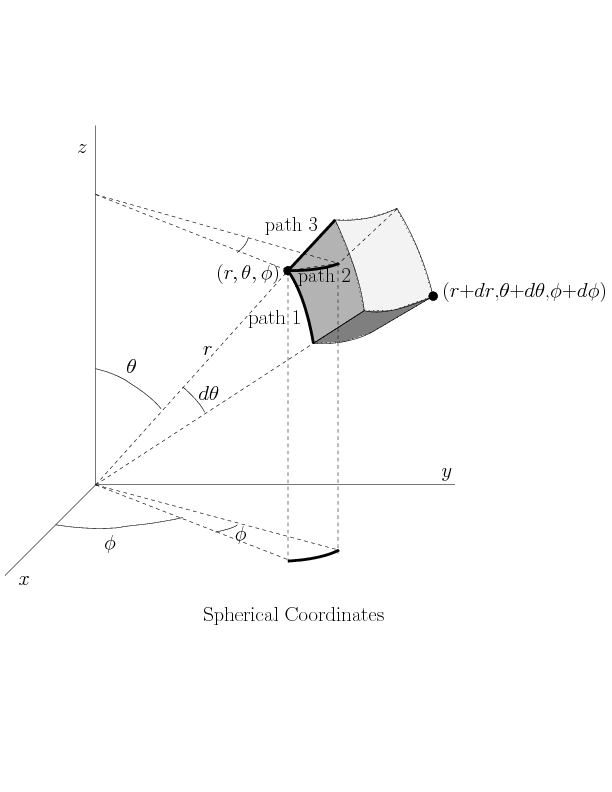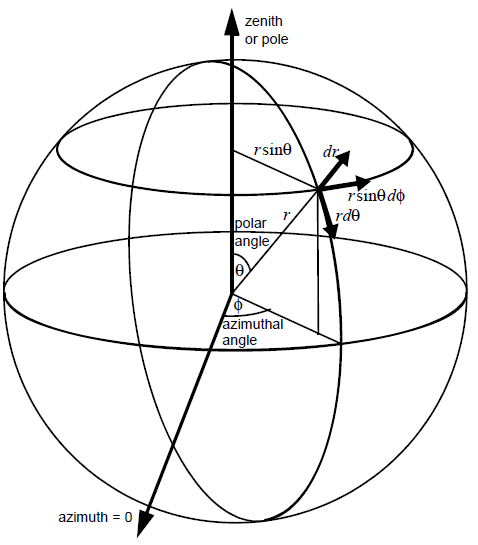We know that (see this wikipedia page) in the metric of Minkowski spacetime:
$$ds^2=(dt)^2-(dx)^2-(dy)^2-(dz)^2 \tag{1}$$
and we also know that in spherical coordinates this same metric becomes:
$$ds^2=(dt)^2-(dr)^2-r^2(d\theta)^2-r^2\sin^2{\theta}(d\phi)^2 \tag{2}$$
Let's prove this last statement:
We have that:
$$\begin{cases}t=t \\ x=r\sin{\theta}\cos{\phi} \\ y=r\sin{\theta}\sin{\phi} \\ z=r\cos{\theta}\end{cases}$$
we can think of $x,y,z$ as functions of $r,\theta,\phi$; so we get:
$$dx=\sin{\theta}\cos{\phi}dr+r\cos{\theta}\cos{\phi}d\theta-r\sin{\theta}\sin{\phi}d\phi$$
and so on for $dy,dz$; then we can square to get $(dx)^2,(dy)^2,(dz)^2$ written in terms of $(dr)^2,(d\theta)^2,(d\phi)^2$. Now we can put our findings back into equation (1) and if all goes right we should find equation (2).
However I didn't get to the end of this calculation because the algebra gradually becomes unbearable, especially when you get to the squaring part, where terms with mixed differentials start to pop out. However seems to me that this method should work out fine.
My questions are: This method will lead to the correct solution (2)? And even if this method is indeed correct: is there a better method to demonstrate (2) from (1)? Where better here means simply less algebra.


